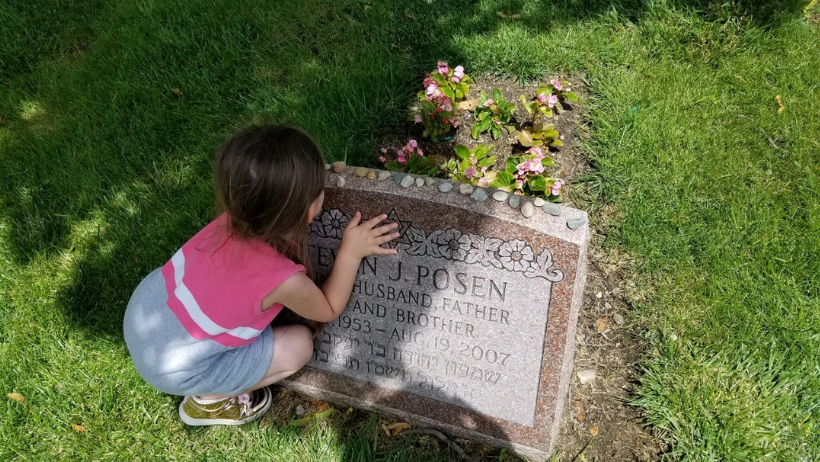In my work as a rabbi I often have the honor of assisting families as they create the grave marker for their loved ones. In case you’re wondering, this is not something that’s taught in rabbinical school. This is an act that is unique to each family and, understandably, holds a lot of emotion. The creation of a marker stone is a finality in the process of loss and grief. Granite is final, the carving doesn’t change over time. This is the stone you’ll see every time you visit the cemetery.

These stones, though brief in their wording, often tell a story. We use descriptions both of character and relationships. Does the family prefer “beloved” or “loving”? How about “cherished”? Should we be generic in relationships and just say father, son, brother, grandfather? Or, should we use our personal terms of endearment like “Daddy” or “Zayde” or “Papa”? And what color should the marker be? Does it matter if the font is different from the other family members nearby or next to them? Should we put an image on it? Is it better to keep it simple? These are just a few of the many questions that go into the process of choosing this final marker for loved ones. It makes sense that there would be so many questions. After all, we get one shot to do this, and the honor and memory of our loved one is at stake.
As we learn in this week’s Torah portion, Jews have been traditionally marking the resting places of family members since the time of the Torah. As an overview, our Torah portion this week, Parshat Vayishlach, reminds us of what it might be like to live fully as yourself, even as the world around you is changing. Jacob is preparing to meet his brother Esau after their fallout and struggles in his dream with the angel who changes Jacob’s name to Israel. The brothers meet and part in peace, and the story continues with the birth of more sons to Jacob and the different ways in which his children misbehave.
In the middle of this section of text, Rachel dies in childbirth, and the Torah magnificently moves from death to life in the course of about three verses. Benjamin is born, but Rachel doesn’t survive, and as the clan is on the road, Rachel is buried along the way. In chapter 35, verse 20 we read, “Over her grave Jacob set up a pillar; it is the pillar at Rachel’s grave to this day. Israel journeyed on.” A simple, yet stunning tale of the burial of Rachel, Jacob’s beloved.
The Torah goes back and forth between calling Jacob by this name and using Israel, the one who wrestles with God. Interestingly, he is called both at the passing of his beloved wife. In this moment he is both the little boy who is born holding on to his brother, and the grown man wrestling with the reality of the world. It is somewhere between these roles where he sets the grave marker for his wife.
Our markers are eternal, no matter how fleeting life is, and our portion suggests that this marker is one that is on her grave to this day. While we don’t read about the inscription upon the stone, we understand that Jacob knew that it was intended to forever symbolize his love for his wife.
Parshat Vayishlach is a reminder that there’s little that’s truly permanent, but establishing a permanent marker to know from where we’ve come and from who we’ve come is an essential part of our journey. The marker for Rachel happens in a blip in the Torah, just one verse. They didn’t agonize over the words, the color, the placement. Instead, the focus is on her legacy and the children who became leaders in our tradition. May we learn from Jacob how to both mark a moment and move forward, and may we do that knowing that while stone might last forever, our stories can outlast even the stone.



